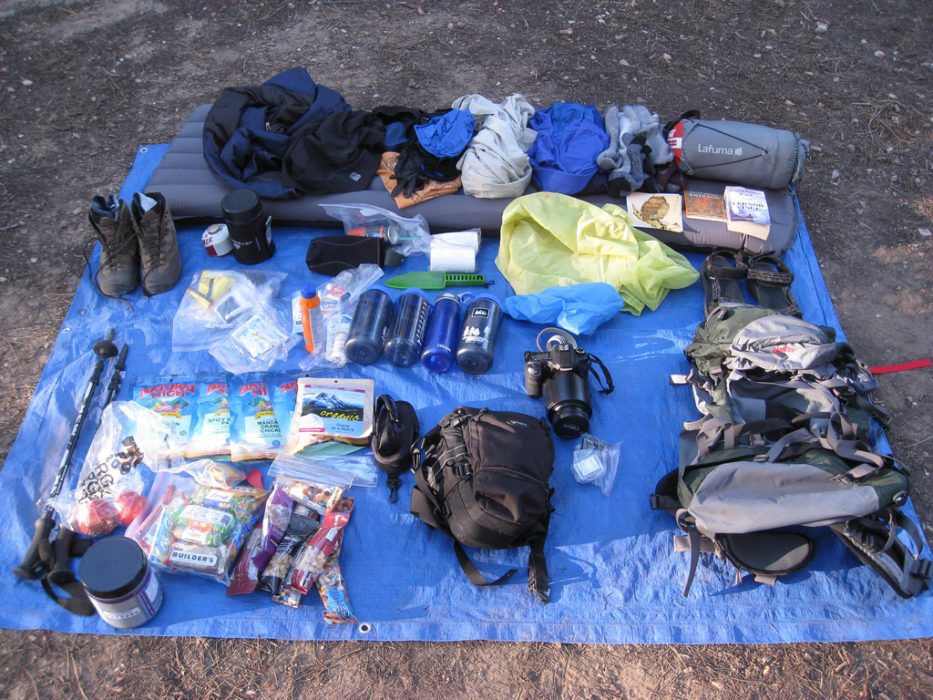
10 Tips for Bringing Food on the Trail
Before heading out for long hike, you have to be prepared to bring food along you. While this can be a frustrating task, there are ways to bring food wisely and prevent frustrations from happening. Once you’ve chosen your cooking stove and your outdoor cooking tools are ready to go, follow these tips about bringing food on the trail:
Read the Labels:
This might seem rather obvious, but taking a little extra time to read labels before you buy food will save you a lot of time. Check the labels to see if your food can be eaten by itself, or if it needs to be mixed with other ingredients. Make sure you also check the nutritional value, as well as the cooking time. Simple foods that take very little time to cook are the best way to go.

Try the Oriental Supermarkets:
Oriental supermarkets or alternative supermarkets will be your best bet when looking for food to bring along with you. These stores tend to sell many dried foods, like rice, beans, and pasta, which are flavorful, high in nutrition, and easy to pack. These stores also tend to have good snacks as well.

When Supermarkets Fail, Visit Outdoor Stores:
If you have little time to waste when it comes to choosing your food, then head to any outdoor store where you can find food that’s already packaged for you. To make it even easier, go online to order a bundle of these kinds of foods, especially if you already know what you’re looking for.
Ditch the Cans and Containers:
Bringing canned foods or small containers might be a good idea if you’ll only be hiking for a few days. However, if you’re going for any longer than that, you won’t want to go with this option. Cans and containers can really weigh down your bag and you may have to get rid of them somewhere along the trail. Try to ditch the cans and find single serve packets of ingredients you’ll use often, like olive oil or butter.

Buy a Dehydrator:
If you prefer to bring your own food, carry less weight, know exactly what you’re going to be eating, and have it all prepared before you go, then invest in a food dehydrator. It might seem like a fancy thing to purchase for a backpacker, but it will save you so much time in the long run. If you backpack often, dehydrate a lot of foods at once so they’ll be ready to go.

Lose the Boxes, Repackage Yourself:
Many foods will come in bulky boxes or packages that although aren’t cans or containers, can take up quite a lot of space. Repackage these foods in Ziploc bags (use two for each ingredient or food item to be extra secure), and label them with a permanent marker. This will also help you to visualize your meals a lot better when you line them out.
Line Out Your Meal Plan:
Before you even think about packing, line out all your meals into what you will eat each day. This is so you can easily see what you’re bringing, and make sure you have enough to eat. Likewise, this will also let you see if you are maybe bringing too much.

Divide and Conquer:
Once you have your foods repackaged into Ziploc bags and lined out, get yourself some more Ziploc bags. Divide everything up into categories. (In case you haven’t already guessed, Ziploc bags will be your best friend). It’s extremely important for all your food and ingredients to be well organized, so when it comes time to cook, you know exactly where everything is. Divide your meals up by breakfast, lunch, dinner, and snacks (and whatever else you prefer), into the gallon-sized bags, and label once more. This will make cooking a much easier task.
Cut Sponges for Cleaning:
First of all, understand that not all your outdoor cookware will be sparkly clean like it would be at home if you had a dishwasher. But, you should consider cooking foods that won’t be super hard to clean. Dried foods don’t usually leave a lot of residue, so you’ll be okay with that. To wash your pot, a good hack is buying heavy duty sponges and cut them into little squares for cleaning each day. You can also buy a washing tool to be able to take less with you.

Don’t Forget to Dispose:
All backpackers should be responsible for cleaning up their campsite or cooking area. Whatever you bring into an area, must also leave with you. As you eat, you’ll have more space in all those Ziploc bags to put all your trash. Though, you might want to make sure your trash is ‘bear-proof’. You can also reuse bags many, many times. Also, be careful when opening packages to avoid spillage, which can be bad for the environment.
Follow these tips to make bringing food on the trail a whole lot simpler!














